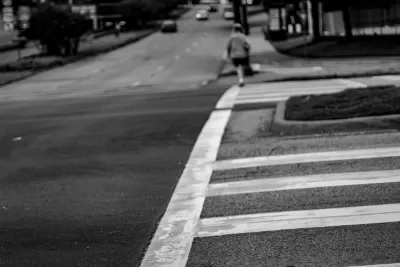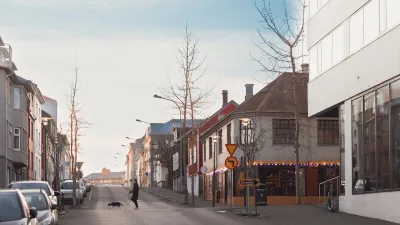The city, which recently adopted a Vision Zero action plan, has one of the nation’s highest pedestrian fatality rates.

Despite having the “fifth highest pedestrian fatality rate out of the 25 largest U.S. cities,” Dallas has failed to prioritize pedestrian infrastructure, reports Lori Brown for Fox 4 News.
Responding to a recent audit of the city’s accessibility ramps, “City staff revealed on Monday that the city would need $54 million to install all of the ramps needed to comply with the federal ADA law on the books for more than 30 years.” According to the article, “The audit found a backlog of 1,500 crosswalks in need of new pavement markings. When the markings wear out, they lose reflectivity and can become slippery.”
Dallas City Councilman Chad West expressed disappointment at the city’s lack of commitment to finding funding sources, saying “the current approach continues to put walkers at risk in a city that historically has struggled to improve its walkability.”
On June 13, the Dallas Morning News Editorial Board urged the city to make their recently adopted Vision Zero plan “a true action plan – not just a wish list.” According to the editorial, “Though traffic fatalities are on the rise nationally, a city staff data analysis shows that Dallas’ fatality rate is rising faster than the U.S. average, reaching 17 deaths per every 100,000 residents in 2020.” Pedestrians account for 30 percent of Dallas traffic deaths, despite only making up 2 percent of commuters.
FULL STORY: Dallas needs $54 million to install sidewalk ramps that meet ADA requirements

Maui's Vacation Rental Debate Turns Ugly
Verbal attacks, misinformation campaigns and fistfights plague a high-stakes debate to convert thousands of vacation rentals into long-term housing.

Planetizen Federal Action Tracker
A weekly monitor of how Trump’s orders and actions are impacting planners and planning in America.

San Francisco Suspends Traffic Calming Amidst Record Deaths
Citing “a challenging fiscal landscape,” the city will cease the program on the heels of 42 traffic deaths, including 24 pedestrians.

Defunct Pittsburgh Power Plant to Become Residential Tower
A decommissioned steam heat plant will be redeveloped into almost 100 affordable housing units.

Trump Prompts Restructuring of Transportation Research Board in “Unprecedented Overreach”
The TRB has eliminated more than half of its committees including those focused on climate, equity, and cities.

Amtrak Rolls Out New Orleans to Alabama “Mardi Gras” Train
The new service will operate morning and evening departures between Mobile and New Orleans.
Urban Design for Planners 1: Software Tools
This six-course series explores essential urban design concepts using open source software and equips planners with the tools they need to participate fully in the urban design process.
Planning for Universal Design
Learn the tools for implementing Universal Design in planning regulations.
Heyer Gruel & Associates PA
JM Goldson LLC
Custer County Colorado
City of Camden Redevelopment Agency
City of Astoria
Transportation Research & Education Center (TREC) at Portland State University
Jefferson Parish Government
Camden Redevelopment Agency
City of Claremont





























